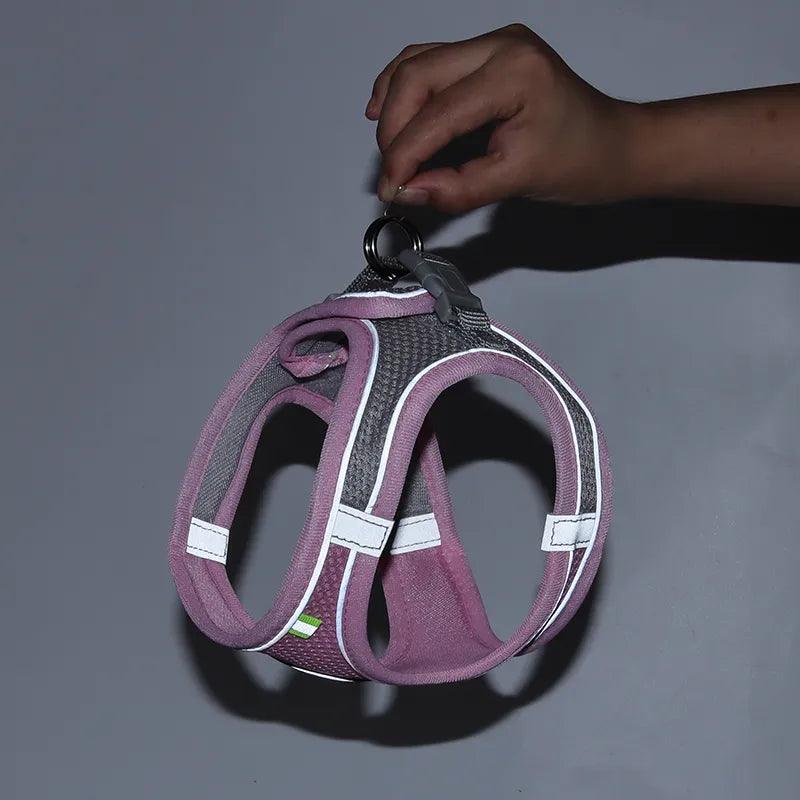As more cat owners look for ways to enrich their pets’ lives, the idea of harness training and walking cats has surged in popularity. But with so many harnesses on the market—most designed for dogs—it’s tempting to wonder: can you use a dog harness for your cat, or should you stick to cat-specific options? This blog explores the key differences, risks, and best practices to keep your feline friend safe and happy.
Why Cat Owners Consider Dog Harnesses
Many pet owners already have dog harnesses at home, and it’s natural to wonder if they can serve double duty. Dog harnesses are widely available, often more affordable, and come in a variety of styles. If you’re thinking about using a dog harness for your cat, you’re not alone.
Key Differences Between Dog and Cat Harnesses
-
Body Structure: Cats are more flexible and agile than dogs. Their bodies are built for squeezing through tight spaces and climbing, which means they can easily wriggle out of harnesses not specifically designed for them28.
-
Harness Fit: Dog harnesses are typically bulkier and may not fit snugly on a cat’s slender frame. A loose harness can be dangerous, as cats can slip out and escape, especially when startled28.
-
Behavioral Response: Cats are more sensitive to pressure points. A harness that’s too tight or hits the wrong spot can cause stress, discomfort, or even a “freeze” response, where the cat flops over and refuses to move5.
Risks of Using Dog Harnesses on Cats
-
Escape Risk: Most dog harnesses are not escape-proof for cats. Cats can back out of them easily, especially if frightened28.
-
Discomfort and Stress: An ill-fitting harness can cause anxiety, restrict movement, or lead to the classic “flop” behavior where cats refuse to walk or move5.
-
Injury: If a harness is too tight, it can restrict blood flow or cause skin irritation. If it’s too loose, it might get caught on objects, putting your cat at risk of injury39.
-
Natural Instincts: Cats are flight animals. Restricting their movement with an improper harness can make them feel vulnerable and stressed, sometimes leading to behavioral issues9.
Expert Recommendations
The consensus among vets and animal behaviorists is clear: don’t use a dog harness for your cat. Cat harnesses are specifically designed to accommodate a cat’s unique body shape and behavior, making them safer and more comfortable8.
“We don’t recommend using a dog harness for a cat. Cat harnesses aren’t expensive and can provide a safe and comfortable journey for your feline friend.”8
What Happens If You Try Anyway?
Some owners report that their cats “flop” or refuse to walk when first introduced to any harness, including dog harnesses. This is a normal reaction as cats adjust to the new sensation, but it’s more pronounced and prolonged with harnesses that don’t fit well25.
How to Choose the Right Cat Harness
-
Look for Escape-Proof Designs: Cat harnesses often feature adjustable straps and secure fastenings to prevent escape.
-
Comfort Materials: Choose soft, breathable fabrics to minimize skin irritation.
-
Proper Fit: The harness should be snug but not tight. You should be able to fit two fingers between the harness and your cat’s body.
-
Consult Your Vet: If you’re unsure, ask your veterinarian for recommendations6.
Tips for Harness Training Your Cat
-
Go Slow: Introduce the harness indoors and let your cat sniff and explore it before putting it on.
-
Short Sessions: Start with short periods and gradually increase the time as your cat gets used to the harness.
-
Positive Reinforcement: Use treats and praise to create positive associations.
Conclusion
While it might be tempting to use a dog harness for your cat, the risks far outweigh the benefits. Cat-specific harnesses are designed for safety, comfort, and your cat’s unique needs. Invest in the right gear, take your time with training, and you’ll both enjoy safer, happier adventures together

